Flowers: precious food and medicine resources
2023-01-03XuqingLiuSenyeWngLiliCuiHuihuiZhouYuhngLiuLijunMengSitnChenXuefengXiYnZhngWenyiKng
Xuqing Liu, Senye Wng, Lili Cui, Huihui Zhou, Yuhng Liu, Lijun Meng,Sitn Chen, Xuefeng Xi,d,*, Yn Zhng*, Wenyi Kng,f,*
a National R & D Center for Edible Fungus Processing Technology, Henan University, Kaifeng 475004, China
b Functional Food Engineering Technology Research Center, Kaifeng 475004, China
c Joint International Research Laboratory of Food & Medicine Resource Function, Kaifeng 475004, China
d College of Physical Education, Henan University, Kaifeng 475004, China
e Hebei Food Safety Key Laboratory, Hebei Food Inspection and Research Institute, Shijiazhuang 050091, China
f Shenzhen Research Institute of Henan University, Shenzhen 518000, China
Keywords:Flowers Active ingredients Biological activity Mechanism
A B S T R A C T Flower plants are popular all over the world and important sources of ornamental plants, bioactive molecules and nutrients. Flowers have a wide range of biological activities and beneficial pharmacological effects.Flowers and their active ingredients are becoming more and more popular in the preparation of food, drugs and industrial products. This paper summarizes the active ingredients, pharmacological activities and applications in the pharmaceutical and food industries of f lower plants in recent years. In addition, the possible molecular mechanism of pharmacological effects of f lower plants were also discussed. 302 active constituents from 55 species of flower plants were summarized, including flavonoids (115), terpenoids (90), phenylpropanoids(20), alkaloids (13), organic acids (27) and others (37). The pharmacological effects of f lower plants are very extensive, mainly including antioxidant, anti-inflammatory, anti-tumor, anti-virus, and hypoglycemic. The mechanisms of anti-inf lammatory, anti-tumor and hypoglycemic activities present the characteristics of multiway and multi-target. Because of its rich nutrients, bioactive ingredients and plant essential oils, and its wide sources, f lower plants are widely used in food, beverage, cosmetics and drug research. Flower plants also play an important role in pharmaceutical industry, food industry and other f ields.
1. Introduction
Flower is the reproductive organ of angiosperms, and its biological function is to produce plant seeds. Flower plants are widely welcomed and used in different countries in the world, and have important ornamental value in people’s daily life. Furthermore,it plays an important role in important festivals, ceremonies, urban greening. However, most people’s understanding of f lowers is limited to their ornamental nature [1].
In European and Asian cultures, f lowers are also used as a source of food and medicine [2,3]. Flowers have attracted wide attention in recent years because they are rich in protein, starch and a variety of vitamins [4,5]. Edible flowers includeChrysanthemum,Typha orientalisPresl,Lonicera japonicaThunb,Centaurea cyanusL. andCanna indicaL., etc. Among them,Tagetes erectaL. can be used as chicken feed [6]. In addition, flower plants can also be used as raw materials for beverages (wine and tea), for example,Taraxacum mongolicumHand can be used for brewing. There are more than 20 kinds of scented tea, including Rose Tea, Plum Blossom Tea, Jasmine Tea, Flos Sophorae Tea, etc., which have the effects of delaying aging, promoting digestion, enhancing immunity [7-10].
In China, the National Health Department has successively announced 10 kinds of flower plants with “food-medicine”,includingSyringa oblataLindl flowers,Citrus aurantiumL. var.amara Engl.,Lonicera japonicaThunb,Chrysanthemum, Rose,Lonicera macranthoidesHand.-Mazz andCrocus sativusL., etc.There are more than 100 species of medicinal flowers, which have important medicinal value. Flowers are rich in a variety of bioactive components, including flavonoids, terpenoids, alkaloids and organic acids [11]. Flower plants have a wide range of biological activities,and have good effects in anti-oxidation, anti-inflammatory, antitumor, hypoglycemic, antibacterial and anti-virus [11-14]. However,the functional value of flower plants has not been paid enough attention.
Flowers are an important source of plant essential oils and spices,such as rose, saffron, lilac, osmanthus [15,16]. In addition, flower plants can also be prepared into mosquito repellent, insecticide and other products.
In order to better utilize flower plants, the active ingredients,biological mechanism, and potential application value of 55 kinds of flower plants are summarized in this paper. It is hoped that more and more attention to focus on the application value of flower plants and help the utilization of flower plants in food, medicine and other industries.
2. Phytochemistry
Three hundred and two active components of flower plants are summarized, including 115 flavonoids (1-115), accounting for 38.08%; 90 terpenoids (116-205), accounting for 29.8%;20 phenylpropanoids (206-225), accounting for 6.62%; 13 alkaloids(226-238), accounting for 4.3%; 27 organic acids (239-265),accounting for 8.94%; 37 other categories (266-302), accounting for 12.25%. It is found that flavonoids and terpenoids are the main active components of flower plants by the review (Fig. 1a). The 22 biological activities of flower plants are summarized, including antioxidant (70), anti-inflammatory (83), anti-tumor (66), hypoglycemic(42), anti-microbial (28), enzyme inhibitor (16), pro-coagulant (9),anti-stroke (7), wound healing (6), neuroprotection (6), insecticidal (5),endometriosis (5), anti-AD (4), hepatoprotection (4), anti-coagulant(4), anti-tussive (3), anti-depressant (3), anti-osteoporosis (3), antinociception (2), anti-obesity (1), anti-drug resistance (1) and skin whitening (1) activities. The biological activities of 302 chemical constituents mainly focus on anti-inflammatory, anti-oxidation, antitumor and hypoglycemic activities (Fig. 1b).
2.1 Flavonoids
Flavonoids are the main pigment components of flower plants with a wide range of pharmacological activities [17,18].
One hundred and fifteen flavonoids in flower plants (1-115) are summarized, including flavonoids, flavone glycosides and flavone derivatives. Their pharmacological effects include anti-oxidant (44),anti-inflammatory (33), anti-tumor (13), hypoglycemic (16),anti-microbial (6), enzyme inhibitor (4), pro-coagulant (7), antistroke (7), neuroprotection (2), insecticidal (2), endometriosis (5),hepatoprotection (4), anti-coagulant (4), anti-tussive (1), antiosteoporosis (3), anti-nociception (2) and skin whitening (1). Among them, anti-oxidant, anti-inflammatory and hypoglycemic activities are the main biological activity of flavonoids (Fig. 2a). In addition,the relationship network between flavonoids and biological activities is established. Compounds1,3,20,41have multiple biological activities (Fig. 2b). The chemical structures and biological activities of flavonoids are shown in Fig. 3 and Table 1.
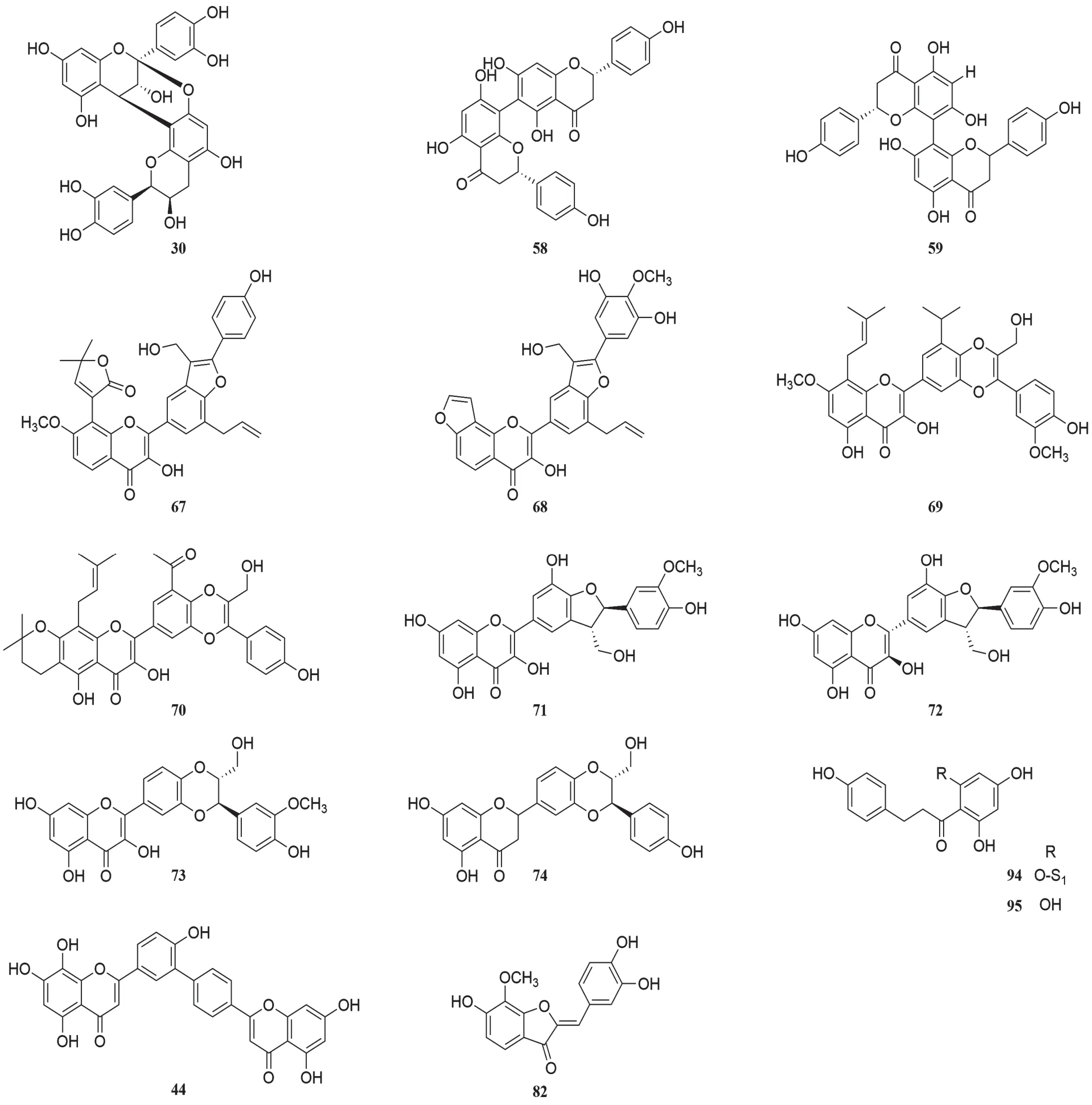
Fig. 3 (Continued)

Fig. 3 (Continued)
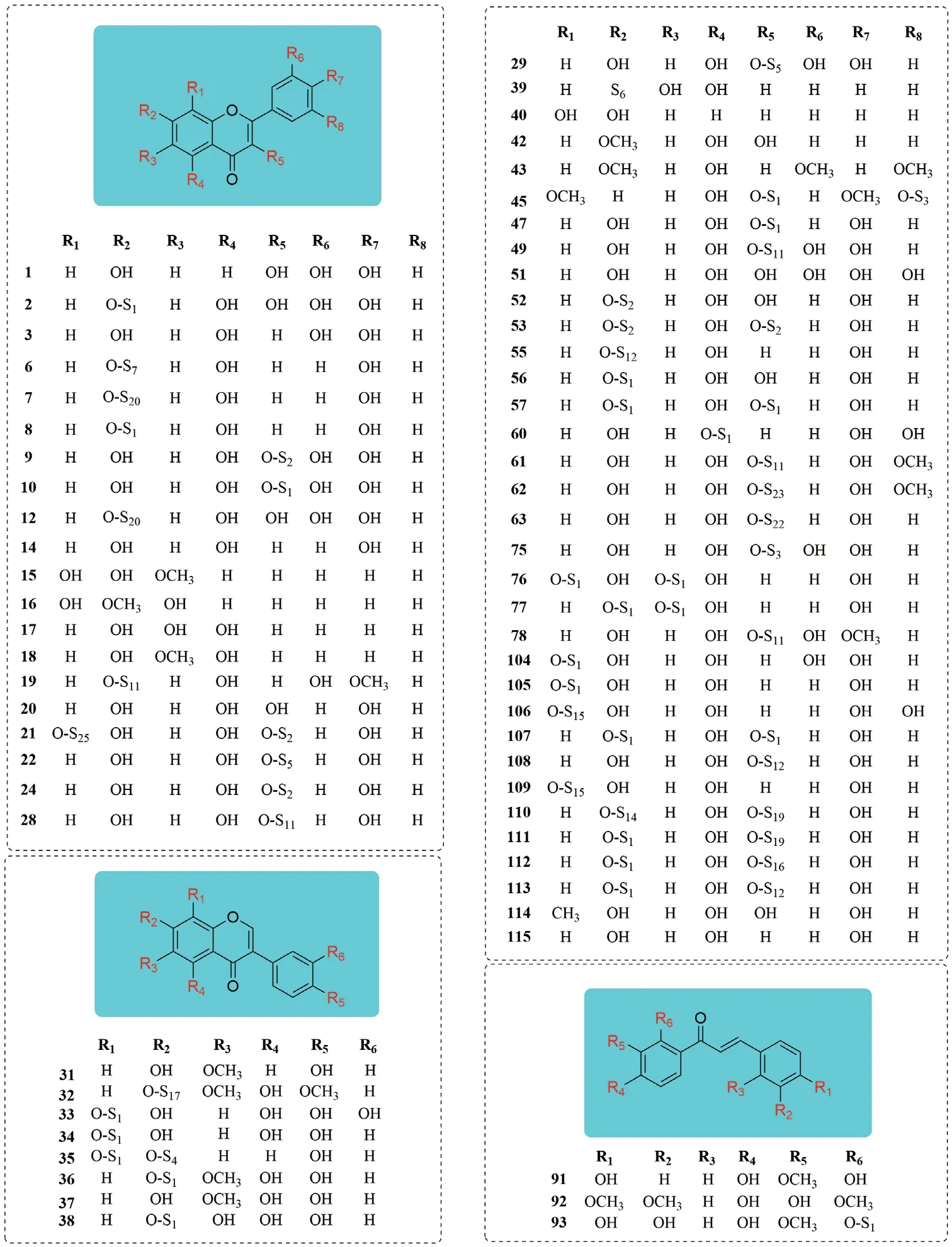
Fig. 3 Active flavonoids in flowers.

Table 1 (Continued)

Table 1 (Continued)
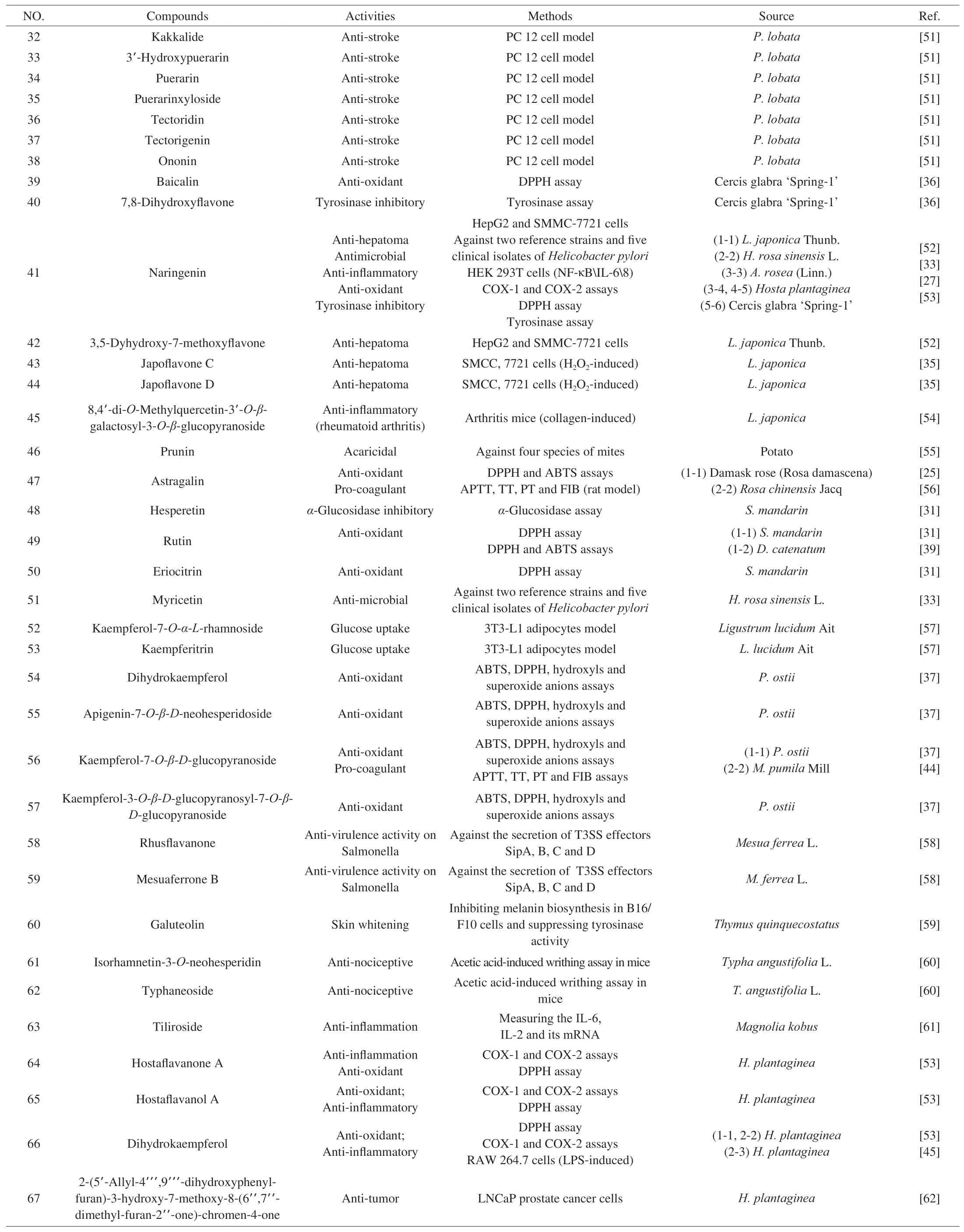
Table 1 (Continued)

Table 1 (Continued)
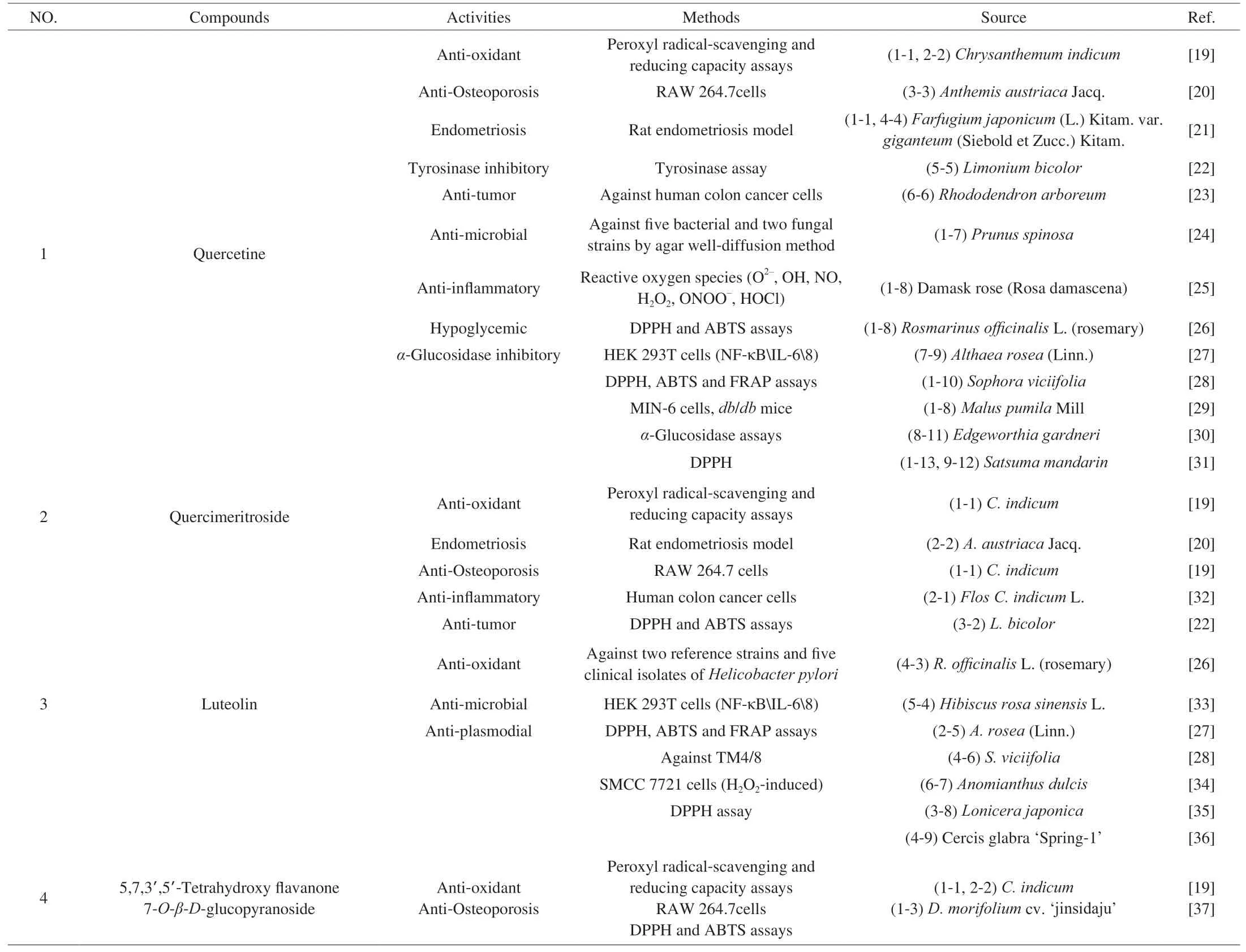
Table 1Flavonoids with bioactivity in flowers.
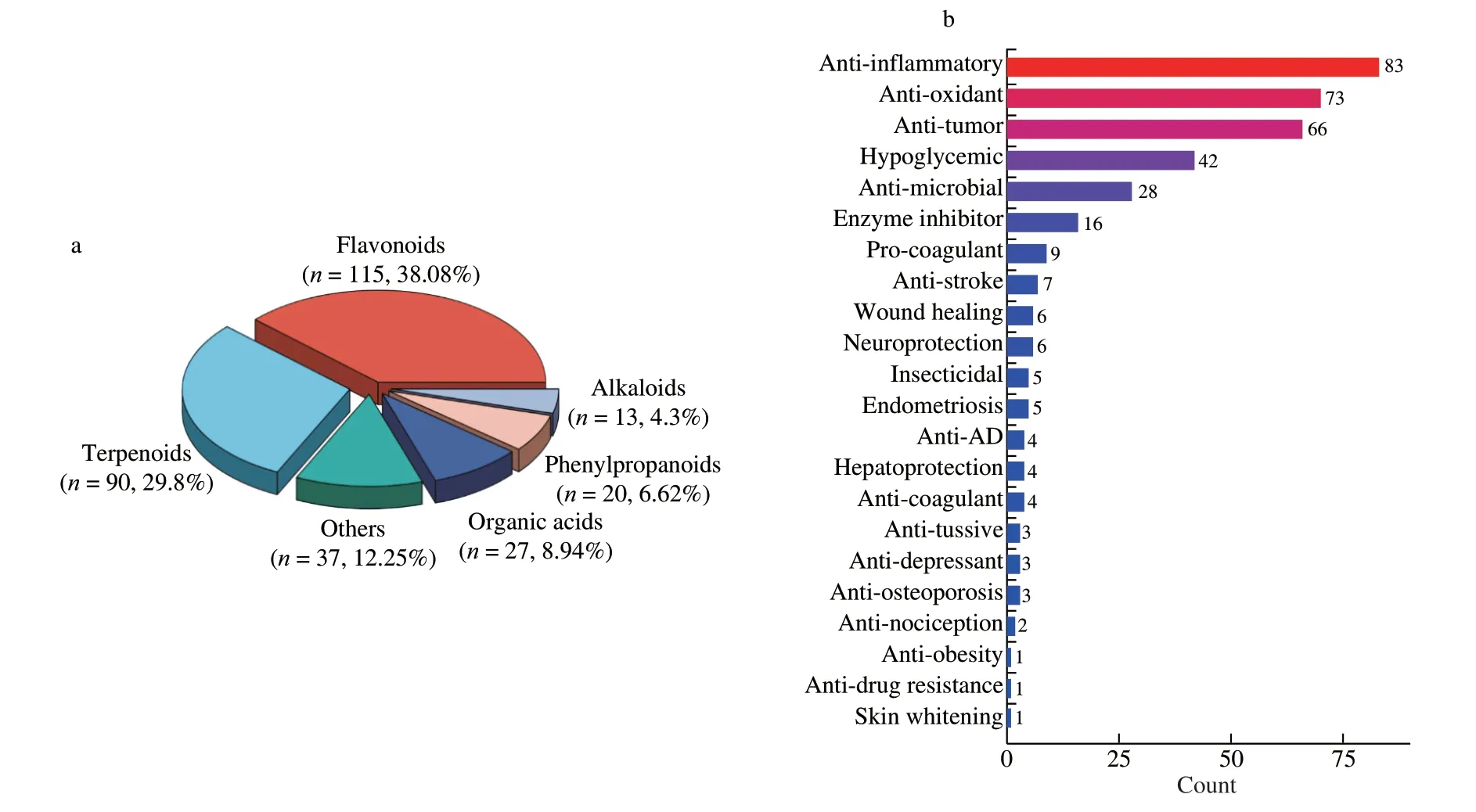
Fig. 1 Active compounds and biological activities in flower plants. (a) The number and proportion of active compounds; (b) Biological activity and number of compounds with such activity.
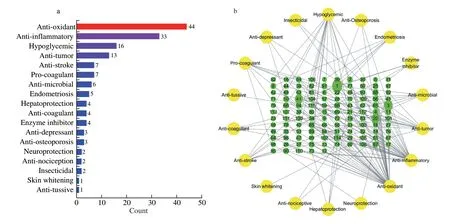
Fig. 2 (a) The bioactivity of flavonoids (The length of the column bar represents the number of compounds with this biological activity). (b) The relationship network between flavonoids and biological activity (The green number represents flavonoids, the size of the circle represents the number of bio-activity of the compound, the yellow circle represents bioactivity, and each edge line represents the bioactivity of the compound).
2.1.1 Antioxidant flavonoids
DPPH, ABTS and FRAP assays, Peroxyl radical-scavenging and reducing capacity assays, Reactive oxygen species (O2-, OH,NO, H2O2, ONOO-, HOCl), hydroxyls, superoxide anions and Reductive power measurement are usually used to investigate the antioxidant activityin vitro. 44 flavonoids with significant antioxidant activity were isolated and identified from 16 kinds of flowers (Table 2).
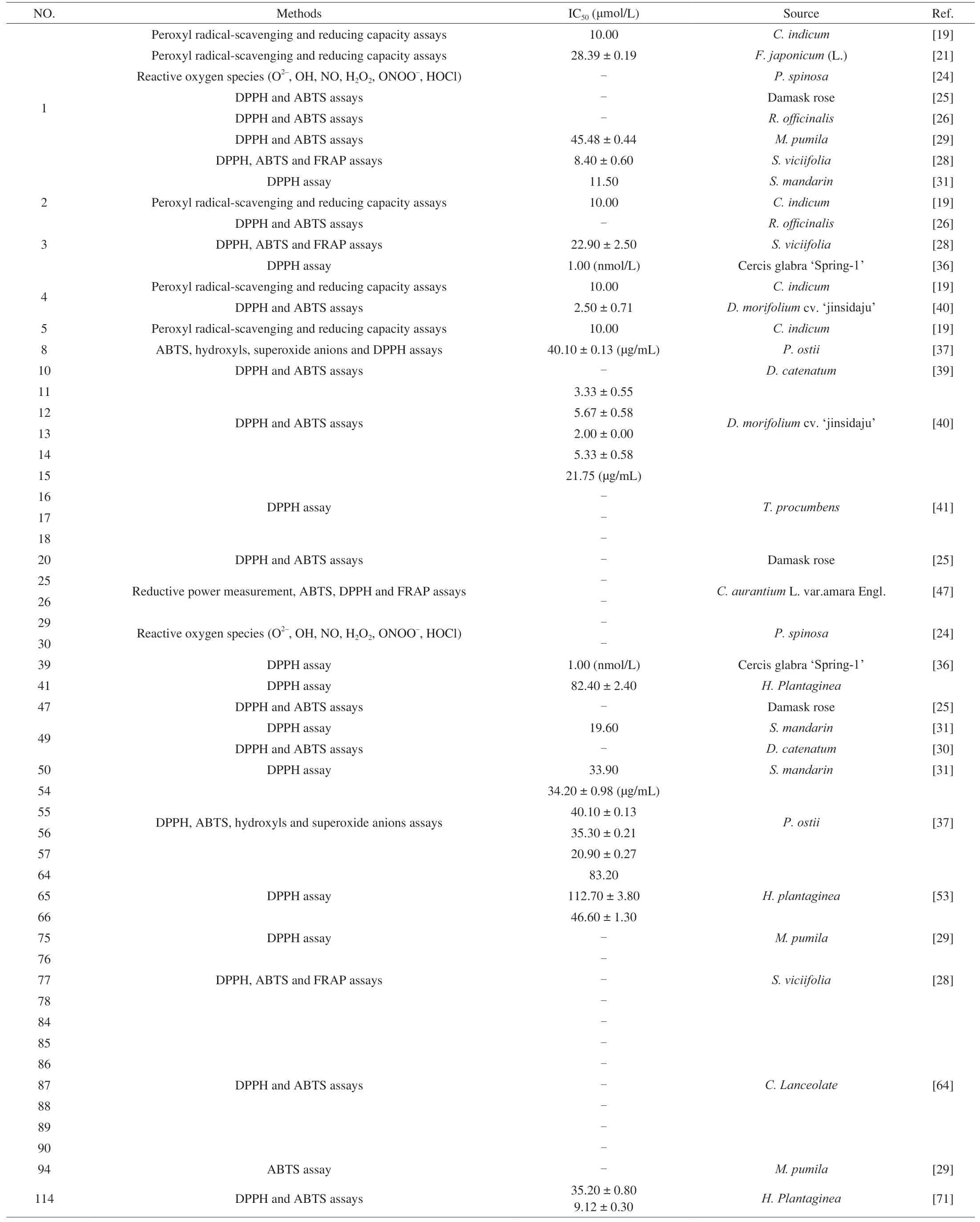
Table 2Flavonoids with antioxidant activity.
The antioxidant structure-activity relationship of 44 flavonoids indicate that the free 7-hydroxyl group in a ring is the key to realize antioxidant activity. With the increase of the number of sugar substituents of flavonoids, its antioxidant activity decreases [74]. In addition, the number of -OH groups in the aromatic ring of flavonoids is considered to be an important evaluation criterion for the strength of antioxidant activity, while the catechol part in the B ring endows phenoxy with high stability through electron delocalization after hydrogen dissociation [64].
2.1.2 Anti-inflammatory flavonoids
Thirty-three flavonoids with significant anti-inflammatory activities were obtained from 6 flower plants (A. rosea,C. indicum,H. plantaginea,C. aurantiumL. var. amara Engl,L. japonica,C. Lanceolate,T. chinensis). Flavonoids could significantly inhibit the release of NO and the production of proinflammatory factors (IL-6,IL-8 and NF-κB) on HEK 293T and RAW 264.7 cell. In addition,some flavonoids had good inhibitory activity on cyclooxygenase(COX-1 and COX-2). Flavonoids also possessed fairly good antiinflammatory effect on arthritis mice model (collagen-induced) and acute pharyngitis rat model (ammonia-induced) (Table 3). The results show that the anti-inflammatory ability of flavonoids is related to the number of hydroxyl substitution of aromatic ring.

Table 3Flavonoids with anti-inflammatory activity.
2.1.3 Anti-tumor flavonoids
Thirteen flavonoids with significant anti-tumor activity were obtained from 4 flower plants (L. bicolor,L. japonica,H. plantaginea,C. lanceolate). Among them, compounds1and3significantly inhibited the proliferation of human colon cancer cells. However,compound20was also sensitive to human breast cancer (MCF-7)and osteosarcoma cells (U2-OS). Compounds3,41-44had more notable inhibitory effect on the proliferation of hepatoma cells (SMCC 7721 and HepG2 cells), while compounds67-72and91-92could inhibit the proliferation of LNCaP prostate and HCT15 cancer cells,respectively (Table 4).
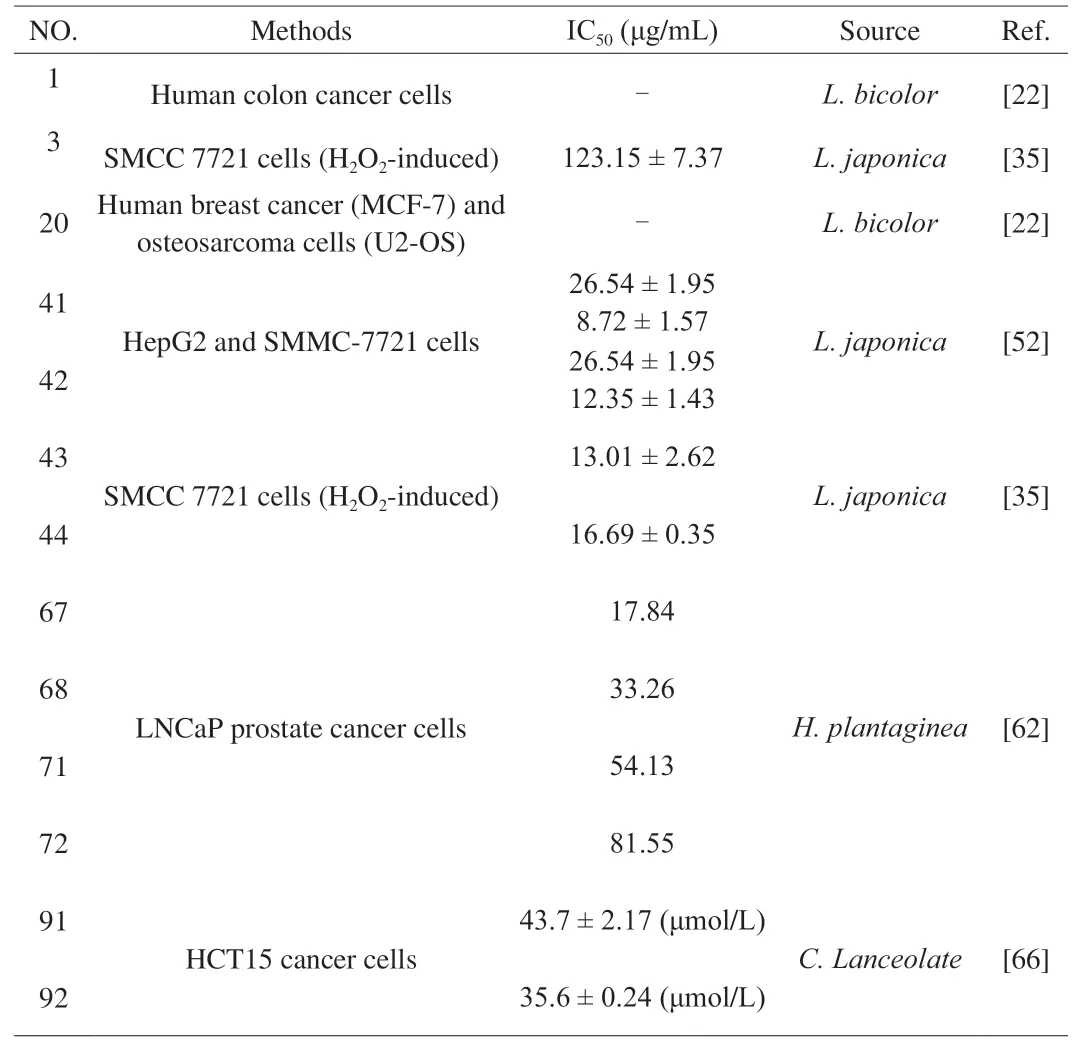
Table 4Flavonoids with anti-tumor activity.
Structure-activity analysis indicates that an unsubstituted allyl hydrogen at C-3 position and two adjacent hydroxyl groups on B ring seem to be more important for the inhibitory effect [75]. In addition,3-O-glycosylation in flavonoids is not necessary for antiproliferative activity. However, the methyl ester of flavonoids has a great influence on its activity [22].
2.1.4 Hypoglycemic flavonoids
Sixteen flavonoids with significant hypoglycemic activity were isolated and identified from 7 kinds of flowers (E. gardneri,C. indici,S. mandarin,L. lucidum,L. lancifolium,C. lanceolateand hollyhock)(Table 5). Among them, compounds48,79-83played a hypoglycemic role through inhibitingα-glucosidase and dipeptidyl peptidase IV(DPP-IV), respectively. At the cellular level, the hypoglycemic effect ofcompounds19,52-53,75,99-103might be achieved by glucose uptake and transport in HepG2, Caco-2 and 3T3-L1 adipocytes cell models.
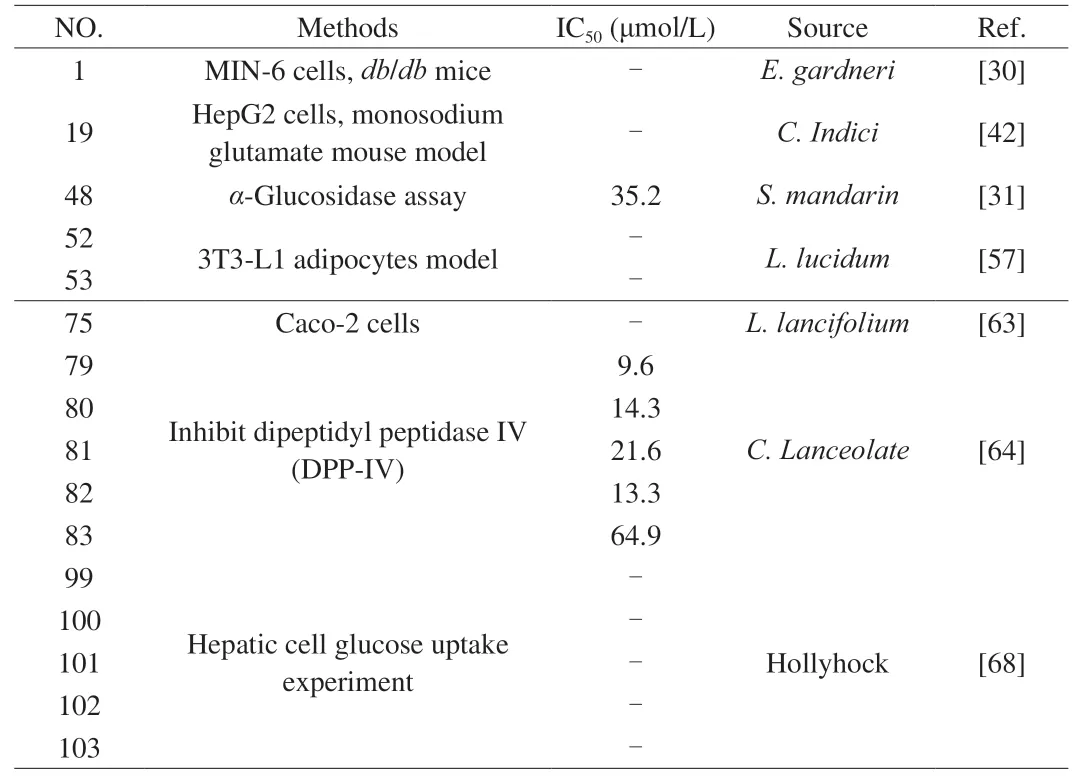
Tale 5Flavonoids with hypoglycemic activity.
2.1.5 Other active flavonoids
In addition, flavonoids also have a wide range of biological activities such as anti-microbial, enzyme inhibitor, pro-coagulant, antistroke, neuroprotection, insecticidal, endometriosis, hepatoprotection,anti-coagulant, anti-tussive, anti-osteoporosis, anti-nociception and skin whitening. Among them, compounds1,3,41and51had significant anti-microbial activity. Compounds20,22,28,47,56,94and95had good pro-coagulant activity by the coagulation factor testin vitro. However, compounds21,23,24and96possessanticoagulant activity, its mechanism still needs further study. In PC12 cell model, compounds32-38showed excellent anti-stroke activity.In rat endometriosis model, compounds1,2and6-8displayed remarkable endometriosis activity. Compounds69,70,73,74,97, and98possessed good hepatoprotection and neuroprotection activities.Compounds1,3,4had anti-Osteoporosis activity. Compound3and46had good anti-plasmodial activity. Compounds20and60had notable anti-tussive and skin whitening activities, respectively.
2.2 Terpenoids
Terpenoids, a kind of compounds with isoprene as the basic structural unit, have extensive biological activities, mainly including anti-inflammatory and anti-tumor effects [76].
Ninety active terpenoids (116-205) in flower plants were summarized, including monoterpene, sesquiterpene, iridoid and triterpene. Terpenoids in flower plants had a wide range of biological activities, including anti-tumor (51), anti-inflammatory (26), antiviral (12), anti-bacterial (6), hypoglycemic (6), anti-oxidant (4),neuroprotection (1) and enzyme inhibitor (1). Among them, antitumor, anti-inflammatory and anti-virus are the main biological activities of terpenoids (Fig. 4a). The terpenoids-bioactivity relationship network showed that terpenoids (121,122,123,124,128,131,151,160,170,171,175,177,201and202) had multiple biological activities. In addition, anti-tumor, anti-inflammatory and anti-virus are the main biological activities of terpenoids (Fig. 4b).The chemical structure and biological activity of terpenoids are shown in Fig. 5 and Table 6.

Fig. 4 (a) The bioactivity of flavonoids (The length of the column bar represents the number of compounds with this biological activity). (b) The relationship network between flavonoids and biological activity (The green number represents flavonoids, the size of the circle represents the number of bio-activity of the compound, the cyan circle represents bioactivity, and each edge line represents the bioactivity of the compound).

Fig. 5 (Continued)

Fig. 5 Terpenoids with bioactivity in flowers.

Fig. 5 (Continued)
2.2.1 Anti-tumor terpenoids
Fifty-one terpenoids with significant anti-tumor activity were isolated and identified from 7 kinds of flowers (I. japonica,T. farfara,W. trilobata,L. japonica,P. ginseng,I. balsamina,G. jasminoides),including sesquiterpenes and triterpenes. Terpenoids in flower plants had significant inhibitory effects on the proliferation of many tumor cell lines (HL-60, HepG2, SMMC-7721, A549/PTX, MCF-7, SW-480, MDA-MB-231, NCI-H460 and Multiple myeloma cell lines)in vitro(Table 7).

Table 6 (Continued)

Table 6Terpenoids with bioactivity in flowers.

Table 7Terpenoids with anti-tumor activity.

Table 7 (Continued)

Table 8Terpenoids with anti-inflammatory activity.

?
2.2.2 Anti-inflammatory terpenoids
Anti-inflammatory effect is one of the main biological activities of terpenoids in flower plants. 26 terpenoids with significant anti-inflammatory activity were obtained from flowers ofI. japonica,L. macranthoides,L. japonica,T. farfara,L.macranthoidesandImpatiens balsamina. Terpenoids could significantly inhibit the production and release of inflammatory mediators (NO) and proinflammatory factors (IL-6, IL-8 and NF-κB) on RAW264.7, BV-2, Human HaCaT, Adult human epidermal keratinocytes and Rat polymorphonuclear leukocytes cellsin vitro. Meanwhile, compound158had good antiinflammatory effect in psoriasis like dermatitis mouse model(imiquimod induced) (Table 8).
2.2.2 Anti-microbial terpenoids
Anti-microbial (anti-bacterial and anti-virus) effect is an important biological activity of terpenoids in flower plants. 17 terpenoids with significant antimicrobial activity were obtained from flowers ofI. japonica,W. trilobata, andL. japonica. Among them,compounds142,148) and152-155had significant inhibitory effects on mycobacterium tube rculosis cells andStaphylococcus aureusATCC 25923, respctively. Compounds149-151,165-166,168and171-175could significantly inhibit the secretion of HIV-1, HBV and HEV related proteins and DNA replication (Table 9).
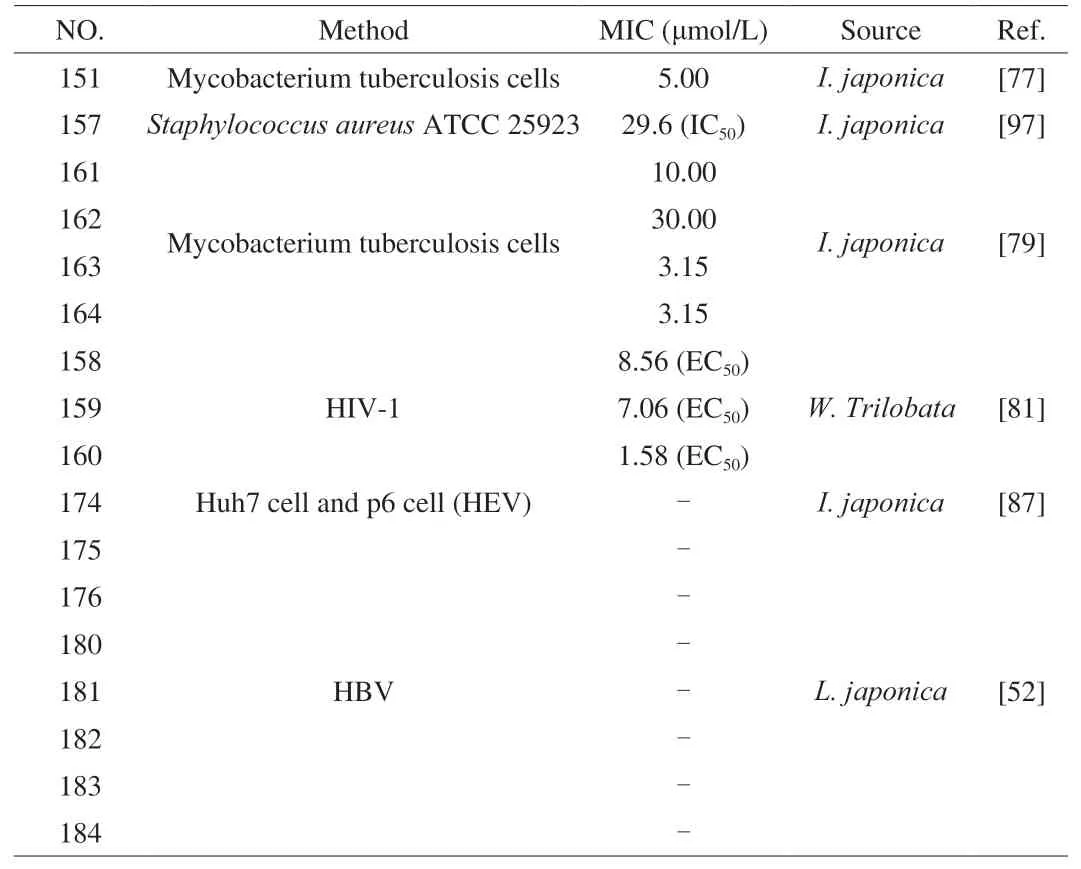
Table 9Terpenoids with anti-microbial activity.
2.2.3 Other active terpenoids
Terpenoids play an important role in hypoglycemia activity,compounds186-188,197-199couldeffectively inhibit the activity ofα-glucosidasein vitro. In addition, compounds197-199also could inhibit protein tyrosine phosphatase1B (PTP1B). The hypoglycemic effects of terpenoids were verified by enzyme experimentsin vitro.Compounds190-193had good anti-oxidant activity, and could be used effectively in DPPH radical scavenging. In addition, compounds131and189had neuroprotective and tyroroidase inhibition effects,respectively.
2.3 Phenylpropanins
Phenylpropanins have a wide range of biological activities, including anti-inflammatory, hypoglycemic and anti-oxidant activity [97].
Twenty phenylpropanoids (206-225), including lignan and coumarin, were obtained from flower ofM. fargesii,L. japonica,
T. farfara,Cercis glabra‘Spring-1’,E. gardneriandC. morifolium.Phenylpropanoids in flower plants had various biological activities,including hypoglycemic (7), anti-inflammatory (7), neuroprotection(2), anti-oxidant (2), anti-drug resistance (1), enzyme inhibitor (1)and anti-tumor (1) activities (Fig. 6a). The relationship network between phenylpropanoid and bioactivity indicated that hypoglycemic and anti-inflammatory activities were the main bioactivities of phenylpropanoid, and compound206also showed a variety of bioactivities (Fig. 6b). The chemical structure and biological activity of phenylpropanins are shown in Fig. 7 and Table 10.
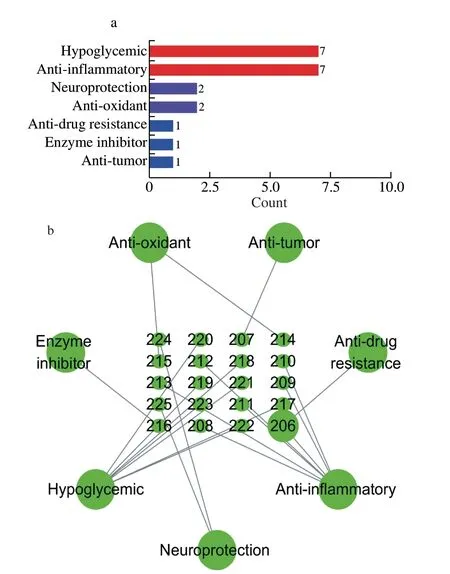
Fig. 6 (a) The bioactivity of phenylpropanins (The length of the column bar represents the number of compounds with this biological activity). (b) The relationship network between phenylpropanins and biological activity (The green number represents phenylpropanins, the size of the circle represents the number of bioactivity of the compound, the green circle represents bioactivity,and each edge line represents the bioactivity of the compound).
2.4 Alkaloids
Alkaloids, a kind of natural nitrogen heterocyclic, have complex ring structure, most of which have physiological activity [106].
Twenty alkaloids (226-238) were obtained from flower of
A. dulcis,N. nucifera,A. marmelos,H. plantaginea,T. chinensisand Potato. The alkaloid constituents of flower plants had anti-AD(4), anti-inflammatory (3), insecticidal (3), enzyme inhibitor (2) and wound healing (1) activities. Among them, anti-AD was the main biological activity of alkaloids (Fig. 8a). The relationship network was constructed to reveal the relationship between alkaloids and various biological activities (Fig. 8b). The chemical structures and biological activities of alkaloids are shown in Fig. 9 and Table 11.

Fig. 9 (Continued)

Fig. 10 (a) The bioactivity of organic acids (The length of the column bar represents the number of compounds with this biological activity). (b) The relationship network between organic acids and biological activity (The green number represents organic acids, the size of the circle represents the number of bioactivity of the compound, the purple circle represents bioactivity, and each edge line represents the bioactivity of the compound).

Table 11Alkaloids with bioactivity in flowers.
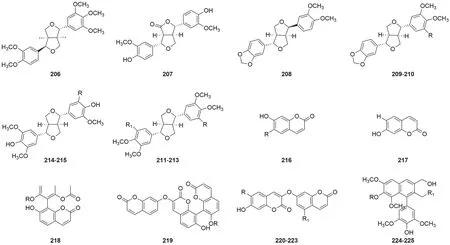
Fig. 7 Phenylpropanoids with bioactivity in flowers.
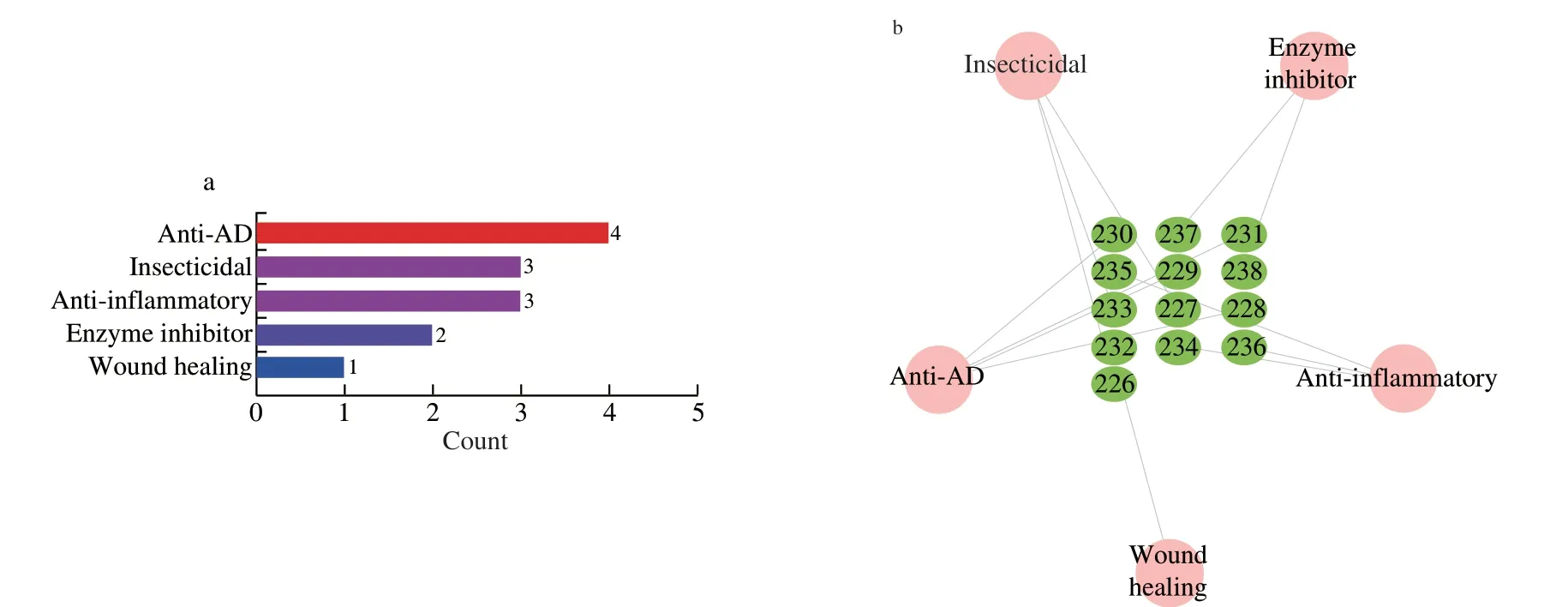
Fig. 8 (a) The bioactivity of Alkaloids (The length of the column bar represents the number of compounds with this biological activity). (b) The relationship network between Alkaloids and biological activity (The green number represents Alkaloids, the size of the circle represents the number of bioactivity of the compound, the pink circle represents bioactivity, and each edge line represents the bioactivity of the compound)

Table 10Phenylpropanoids with bioactivity in flowers.
Compounds219-222, blood-brain barrier (BBB)-permeable compounds, showed accelerative effects on neurite outgrowth in PC-12 cells and good permeability in BBB model. Compounds225-227withexcellent anti-inflammatory activity could inhibit the production of inflammatory cytokines such as NO, IL-6 and TNF-α,as well as the expression of iNOS in RAW264.7 cells. Compounds217and218showed moderate anti-plasmodial activities against TM4/8. Compounds228and229might be used as potential steroid 5α-reductase inhibitor. Compounds223and224possessedwound healing and acaricidal activities, respectively.
2.5 Organic acids
Twenty-eight organic acids (239-265) from 16 flower plants(L. macranthoides,F. japonicum,T. farfara,C. indicum,G. jasminoides,L. japonica,P. spinosa,R. officinalis.,L. lancifolium,A. rosea,D. catenatum,T. Chinensis,C. chinensis,M. ferrea,S. oblata,Damask rose) are summarized, including anti-oxidant (11), enzyme inhibitor (7), anti-inflammatory (7), anti-viral (2), anti-bacterial (2), antitussive (2), pro-coagulant (1) and hypoglycemic (1) activities (Fig. 10a).The relationship network between organic acids and biological activities indicate that anti-oxidant, anti-inflammatory and Enzyme inhibitor were the main biological activities of organic acids. Compounds240,243,251and255had multiple biological activities simultaneously (Fig. 10b). The chemical structures and biological activities of organic acids are shown in Fig. 11 and Table 12.
Compounds230-236presented monoamine oxidase B (MAO B)inhibitory effect. DPPH, ABTS and reactive oxygen species (O2-, OH,NO, H2O2, ONOO-, HOCl) assays indicated that compounds231,237, 240,241,244-247,251had significant anti-oxidant activity.Compounds234,242,243,246and248-250with excellent antiinflammatory properties could significantly suppress the production of NO and pro-inflammatory cytokines (IL-6, IL-8 and TNF-α) in RAW264.7 cells. In addition, compounds238and239with anti-HBV effects, could significantly inhibit HBsAg and HBeAg secretion,and HBV-DNA replication. Compounds1and7exhibited excellent antibacterial activity againstS. aureusATCC25923.
2.6 Others
Thrity-six others active compounds (266-302), obtained from 15 flower plants, including hypoglycemic (12), anti-oxidant (9),anti-inflammatory (7), wound healing (5), anti-tumor (1), antiobesity (1), neuroprotection (1), pro-coagulant (1) and enzyme inhibitor (1) activities (Fig. 12a). Others-biological activity relationships show that, antioxidant, anti-inflammatory and enzyme inhibition were the main biological activities of others. Compound297had a variety of biological activities (Fig. 12b). The chemical structures and biological activities of others are shown in Fig. 13 and Table 13.
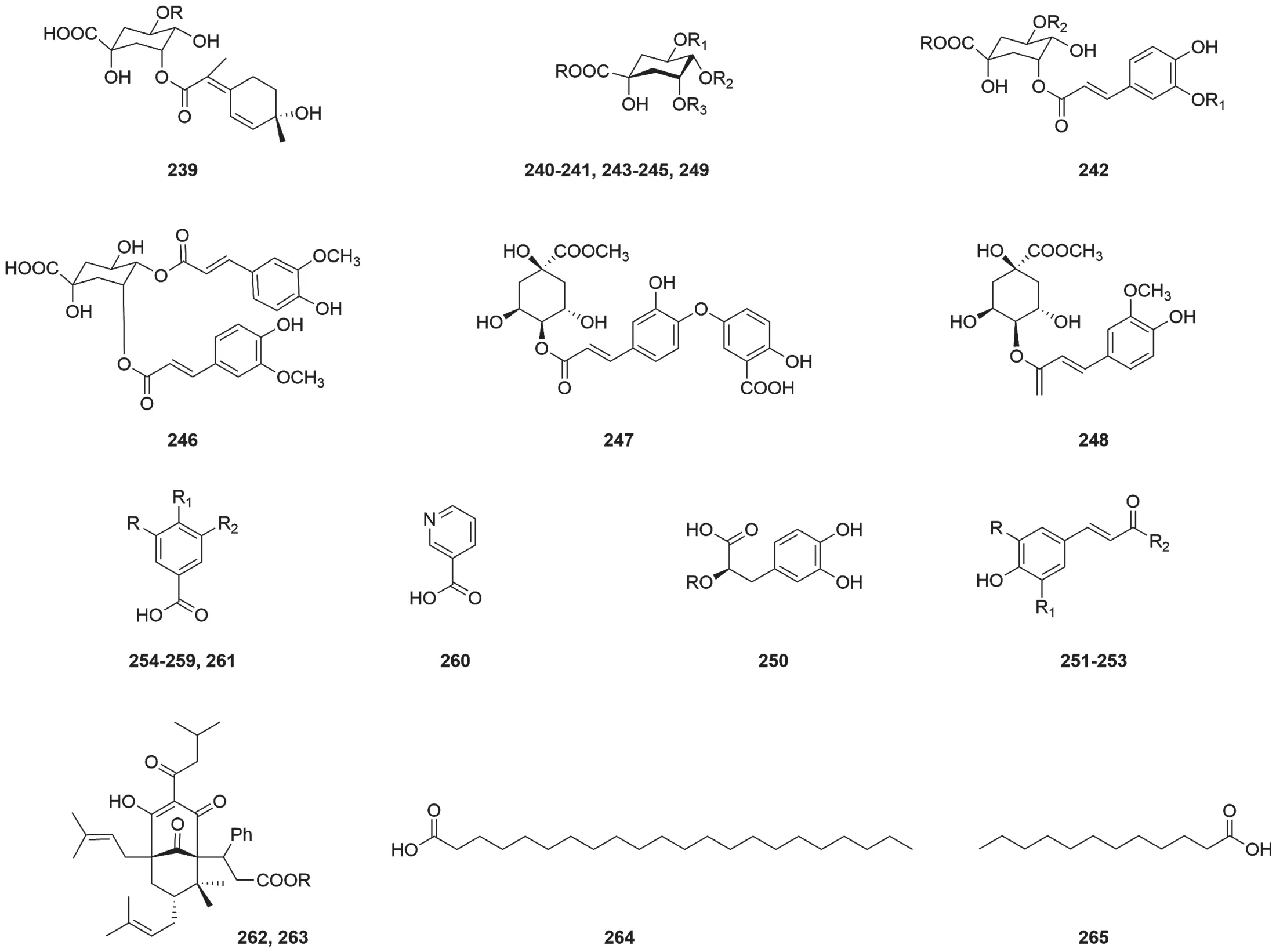
Fig. 11 Organic acids with bioactivity in flowers.
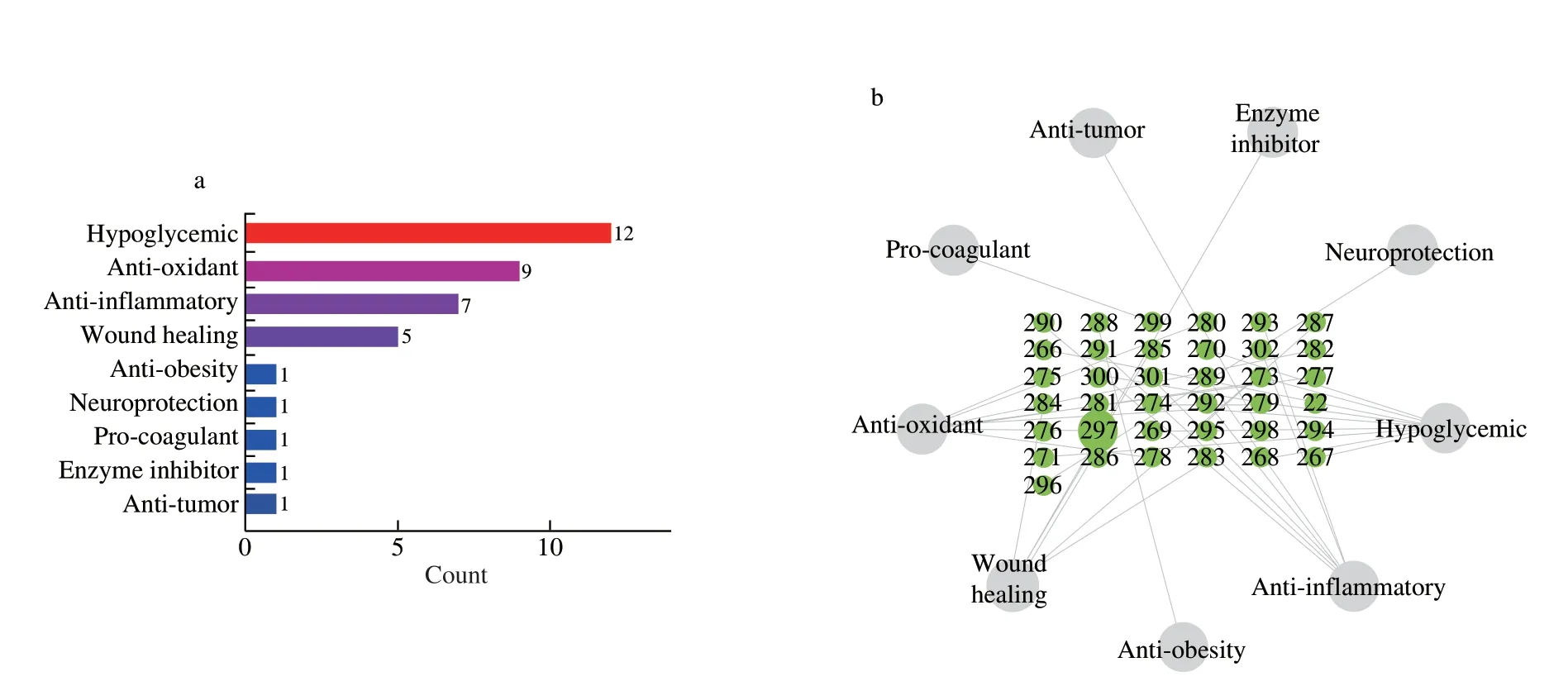
Fig. 12 (a) The bioactivity of others (The length of the column bar represents the number of compounds with this biological activity). (b) The relationship network between others and biological activity (The green number represents others,the size of the circle represents the number of bioactivity of the compound,the grey circle represents bioactivity, and each edge line represents the bioactivity of the compound)
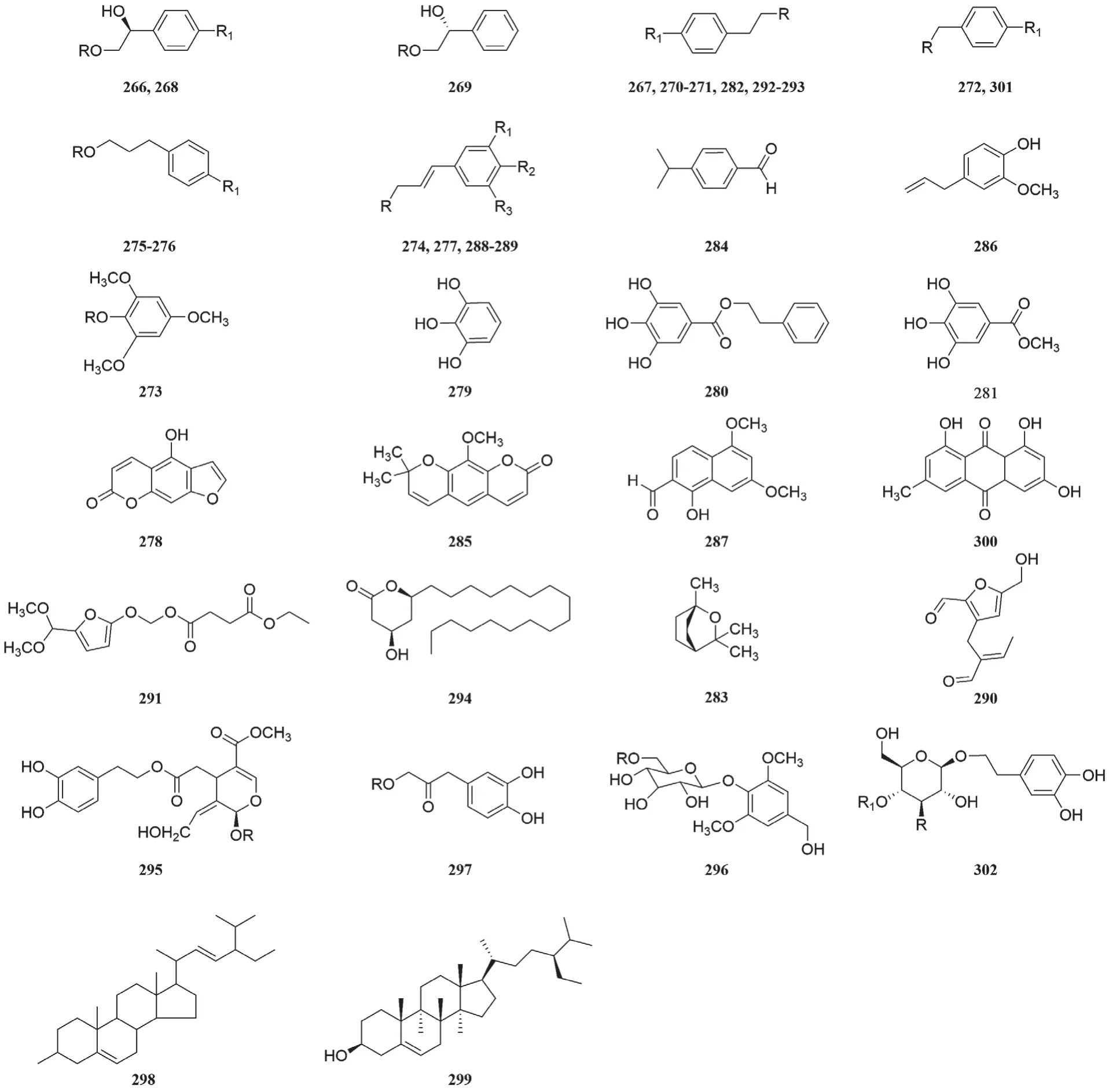
Fig. 13 Others with bioactivity in flowers.

Fig. 14 The substituents of active compounds from flower plants.
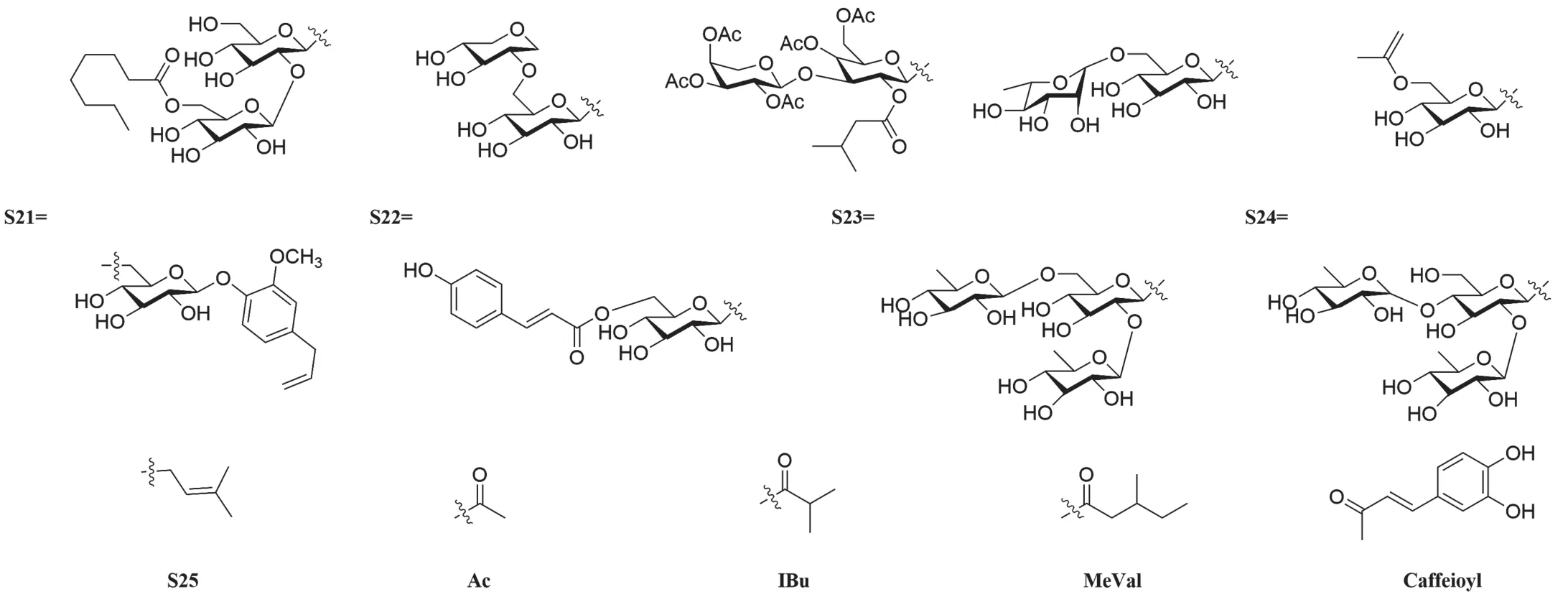
Fig. 14 (Continued)
Compounds257-265,286,287and292had hypoglycemic effects by inhibitingα-glucosidase activityin vitroor by regulating glucose uptake in 3T3 L1 cells. Compounds266-269could effectively relieve H2O2-induced oxidative injury in NRK52e cells. In addition,compounds270-273and289had good antioxidant activity through DPPH and ABTS assays. Compounds280-282could inhibit the production and release of NO, IL-6 and NF-κB in RAW 264.7 cells (induced by LPS). Compounds283-285, as cyclooxygenases inhibitory, had anti-inflammatory potential. Experiment with HaCaT Keratinocytes, Hs68 Dermal broblasts, RAW264.7 cells and full thickness wound of rats, compounds274-278played a significant role in wound healing process.

?
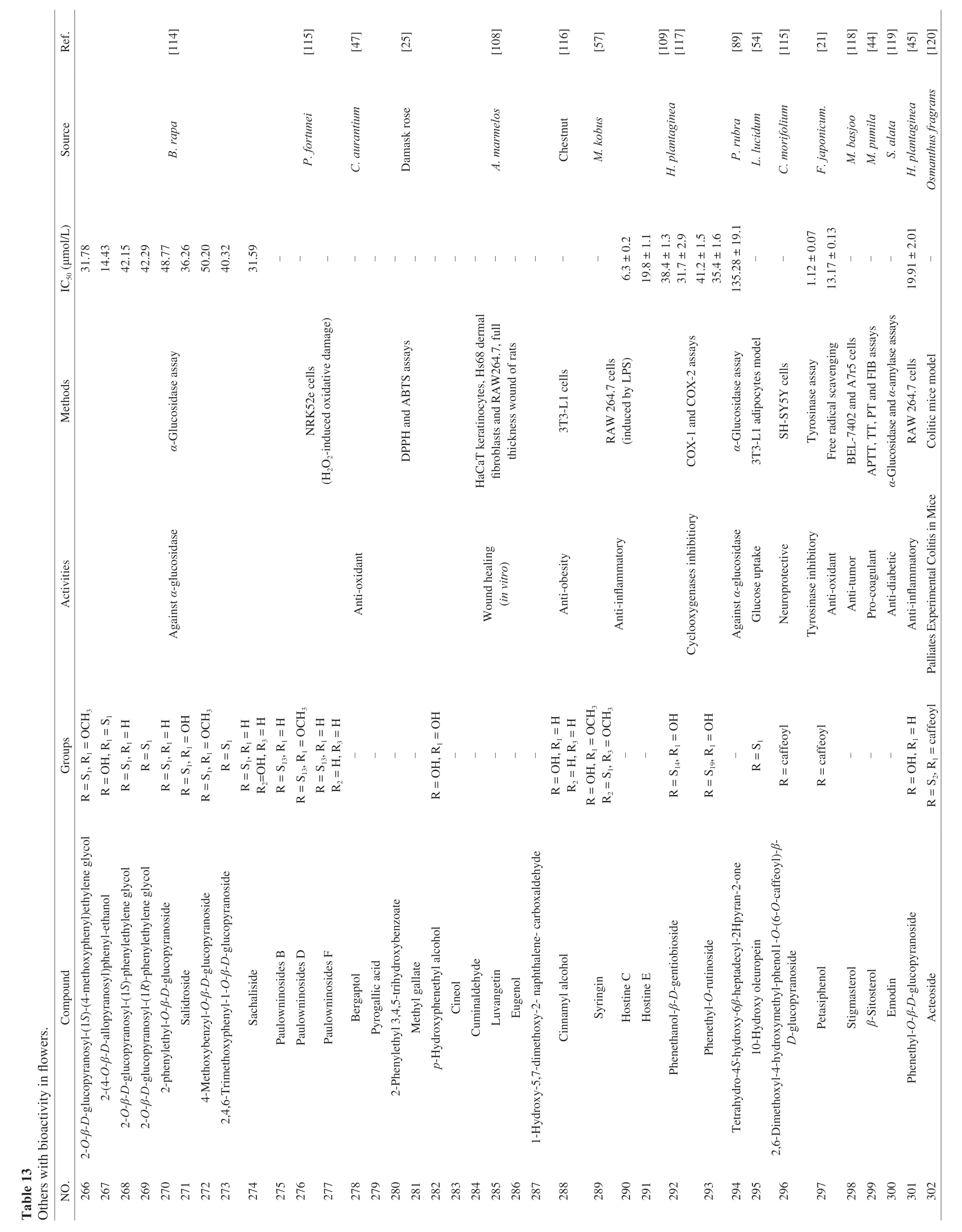
?
3. Main bioactive mechanisms
3.1 Anti-inflammatory activity
Anti-inflammatory activity is one of the main biological activities of the active chemical components of flower plants. The antiinflammatory mechanisms include the regulation of MAPKs and NF-κB. JAK, EGFR and Nrf2 signaling pathways (Fig. 15).

Fig. 15 Anti-inflammatory mechanism of active components in flowers. Nitric oxide (NO), interleukin-6 (IL-6), tumor necrosis factor-α (TNF-α), interleukin-1 beta (IL-1β), nuclear factor-kappa B (NF-κB), cyclooxygenase-2 (COX-2), inducible nitric oxide synthase (iNOS), mitogen-activated protein kinases (MAPKs),extracellular signal-regulated kinases (ERK), c-Jun N-terminal kinases (JNK), activator protein 1 (AP-1), p38, epidermal growth factor receptor (EGFR),lipopolysaccharide (LPS), reactive oxygen species (ROS), nuclear factor erythroid 2-related factor 2 (Nrf2).
Compound1exhibited a remarkable ability to inhibit the production of pro-inflammatory cytokines such as NF-κB, IL-6 and IL-8 [27]. Compounds3,19,104-106with obvious anti-inflammatory effects, could significantly suppress the production of NO, TNF-α and IL-6 [32,68]. Compound45could down-regulate gene expression of IL-1β, IL-6 and TNF-α in joint tissues of CIA mice through NF-κB pathway [54]. Compounds25and27could suppress the production of NO, IL-6, TNF-α, IL-1β and gene expression by significantly blocking the MAPK and NF-κB pathway in RAW264.7 cells. Among them, compound25could marginally attenuate the phosphorylation of ERK, JNK and P38. Both compounds25and27markedly inhibited the phosphorylation of P65, IκBα, IκKα/β and cytosolic NF-κB subunit p65 translocation to the nucleus [48,121,122].Compound112could clearly suppress the production of NO, TNF-α,IL-1β and IL-6 in RAW 264.7 cells. Additionally, compound112remarkably reduced the of phosphorylated NF-κB (p65), IκB, JNK,Erk and p38, together with the expression of iNOS and COX-2 proteins [123]. Compound167might play an anti-inflammatory role by affecting the NF-κB signaling pathway. Compound167could inhibit PMA-induced nuclear translocation of NF-κB p65, the activity of IκKα/β and affect the phosphorylation and degradation of IκBα in NCI-H292 cells [124]. Additionally, compound167also was a potent therapeutic candidate for treatment of intestinal inflammation, which attenuated DSS-induced colitis in mice by inhibiting the activation of NF-κB and inducing Nrf2 pathways [125].The proposed mechanism of Nrf2-mediated antipsoriatic effects of compound167by suppressing NF-κB and STAT3. Furthermore,compound167could inhibit osteoclastogenesis by suppressing the NF-κB and p38/MAPK signaling pathways [84,126,127]. Compound206could reduce the activity of IL-6 promoter and IL-6 production in human monocytes THP-1 cells induced by phorbol-12-myrisatet-13-acetate (PMA). In addition, compound206could regulate MAPK and NF-κB and AP-1 activity. The binding affinity of NF-κB and AP-1 transcription factors to IL-6 promoter was attenuated by downregulating the phosphorylation of p38, the nuclear translocation of p50 and c-Jun [99]. Compound208significantly reduced articular cartilage degeneration and synovitis by down regulating IL-6, IL-1 and up regulating IL-10. In addition, compound208transformed the polarization phenotype of macrophages from M1 to M2 subtype by down-regulating p38/ERK/JNK/MAPK and p65/NF-κB signaling pathway [98,100]. Compound208significantly reduced the expression of COX-2, iNOS, TNF-α and CCL-5 in THP-1 cells by inhibiting MAPK and NF-κB pathway, including downstream JNK, AP-1 and NF-κB pathway [101]. Compounds209-213could effectively suppress the secretion of inflammatory mediators such as ROS, TNF-α and IL-6 in CSC-stimulated airway epithelial cells.The mechanism of preventing airway inflammatory related to the inhibition of ERK and Akt phosphorylation levels in CSCstimulated human lung mucoepidermoid carcinoma (NCI-H292)cells. Among them, compound211inhibited the expression of IL-1β, IL-6 and IL-8 by suppressing the activation of EGFR and its downstream effectors [102].
3.2 Anti-tumor activity
Bioactive components of flower plants play an important role in anti-tumor activity, and the anti-tumor mechanisms include the regulation of NF-κB, AKT/mTOR, Nrf2 and mitochondrial apoptosis pathways (Fig. 16).
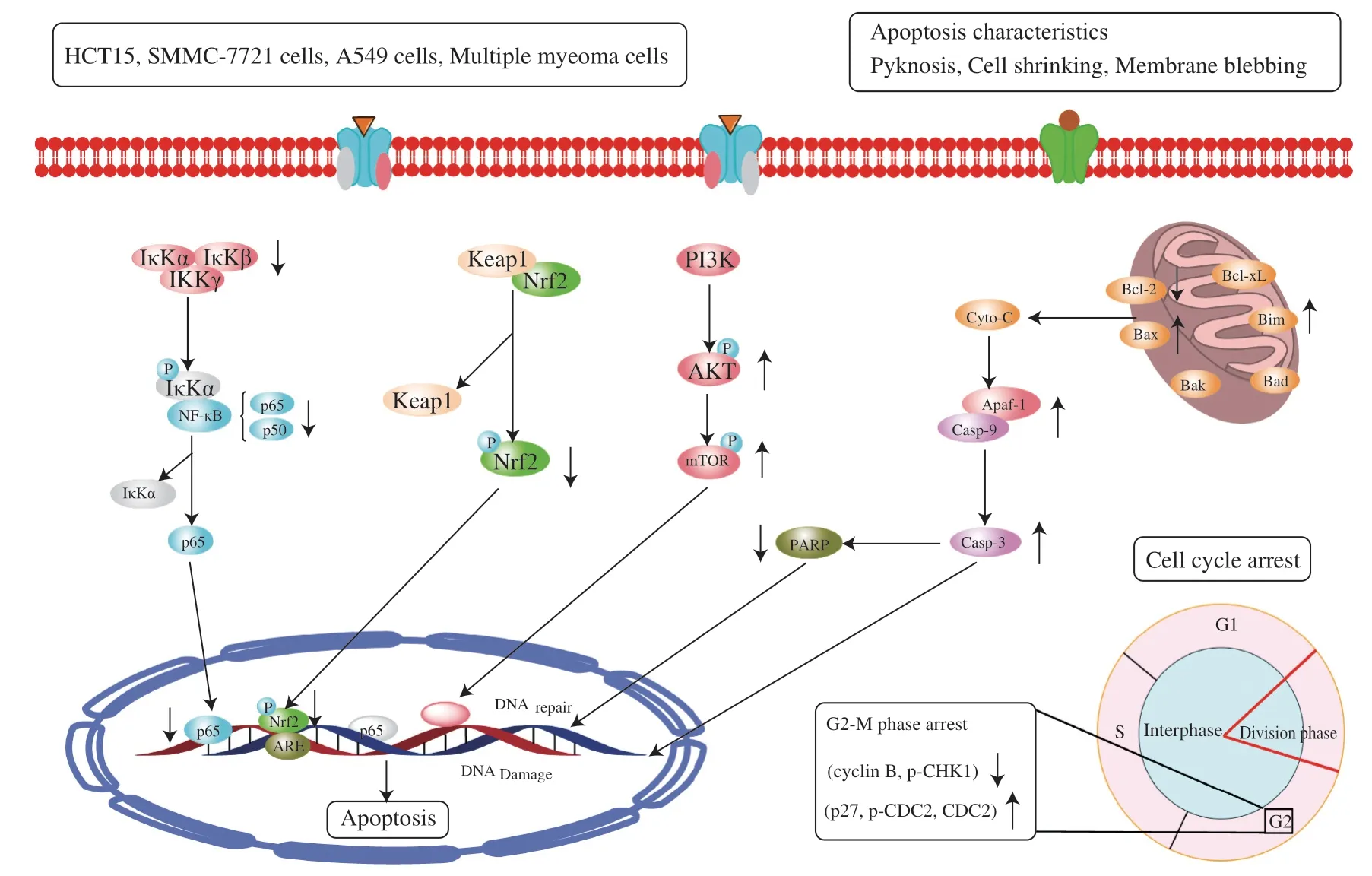
Fig. 16 Anti-tumor mechanism of active components in flowers. Reactive oxygen species (ROS), poly-(ADP-ribose)-polymerase (PARP), B-cell lymphoma-2(BCL-2), bcl-2-associated X protein (BAX), bcl-2 antagonist killer (BAK).
Compounds91and92had the inhibitory effect on the viability of human colon cancer cells HCT15. Compounds91and92induced caspase-3 cleavage and PARP degradation, eventually leading to apoptosis of HCT15 cancer cells [65]. Compound3inhibited cell viability in hepatoma cell lines with apoptosis. Compound3upregulated of AKT/mTOR signaling pathway and down-regulated of Keap1/Nrf2/ARE signaling pathway in SMMC-7721 cells [35].Compound133induced apoptosis of paclitaxel-resistant cell line A549/PTX through mitochondria-mediated pathway. Compound133significantly reduced the expression of anti-apoptosis related protein Bcl-2, and up-regulated the expression of apoptosis related protein Bim and Bax. The cleavage of caspase-3 and caspase-9 were also increased [78]. In addition, compound24induced G2-M phase arrest by modulating the expression of P27, p-CDC2, CDC2, cyclin B and p-CHK1 in lung cancer cells formed [78]. Compound148also induced cell cycle arrest at G2/M phase in A549 cells [95]. Compound173could inhibit the proliferation of Multiple myeloma (MM) cell lines, and bind IKKβ directly, which could induce the apoptosis and G2/M phase arrest of MM cell lines [86]. Compounds207and42induced hepatoma cell apoptosis via the intrinsic apoptosis pathway.Both of themcansignificantly reduce the expression of Bcl-2 protein and promote the expression of Bax and Bak proteins [52].
3.3 Hypoglycemic
Bioactive components in flower plants play an important role in hypoglycemic activity, and the mechanisms include the regulation of NF-κB, AKT/mTOR, Nrf2 and mitochondrial apoptosis pathways (Fig. 17).
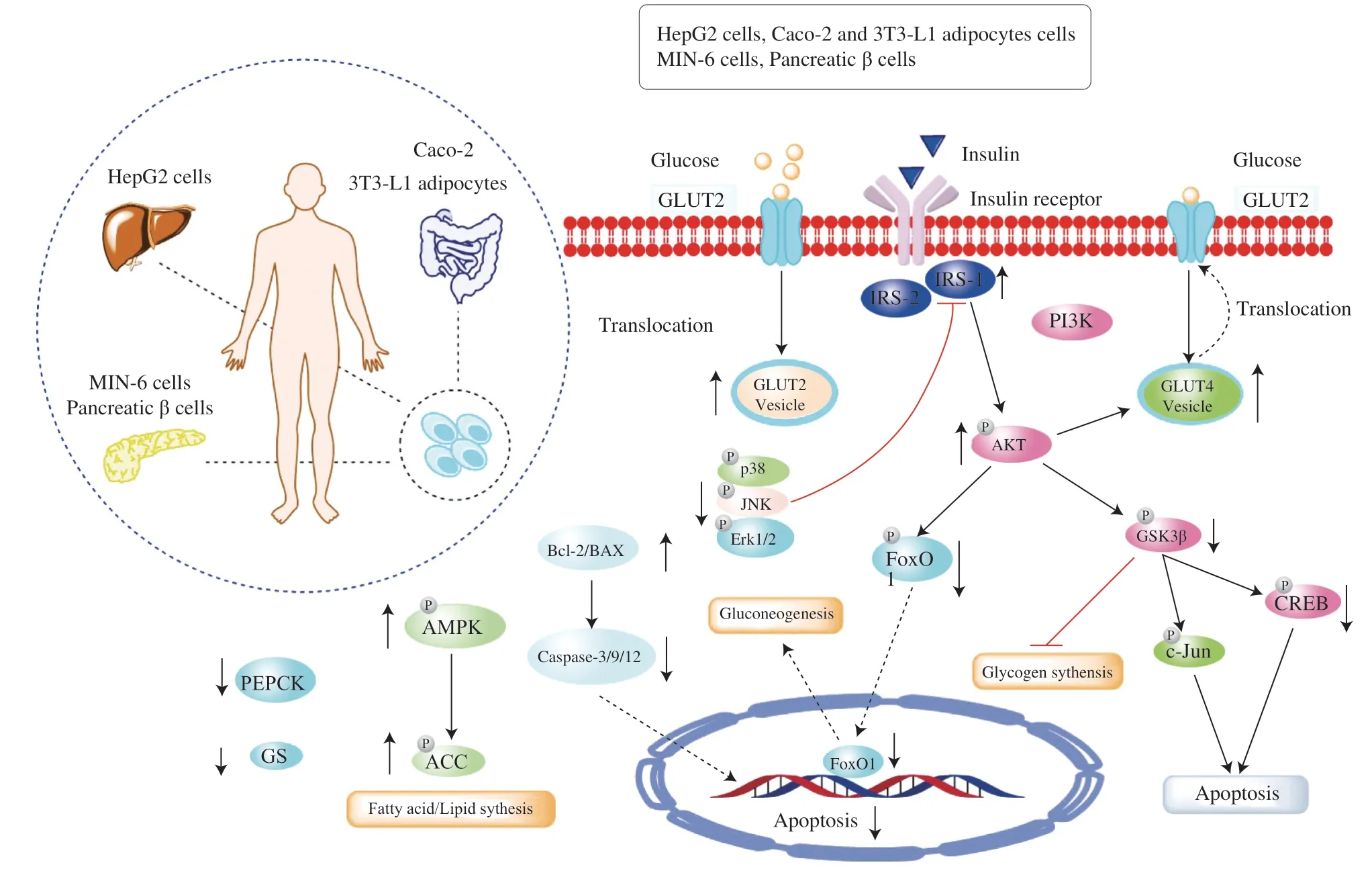
Fig. 17 Hypoglycemic mechanism of active components in flowers. Phosphorylation of GS (glycogen synthase), PEPCK (phosphoenolpyruvate carboxykinase),AMP-activated protein kinase (AMPK), phos-phatidylinositol 3-kinase (PI3K), glucose transporter-4 (GLUT4), serine-threonine protein kinase (AKT), insulin receptor substrate (IRS), 2-[N-(7-nitrobenz-2-oxa-1,3-diazol-4-yl) amino]-2-deoxyglucose (2-NBDG).
The flower ofE. gardneriis believed to possess an effective therapeutic for type 2 diabetes mellitus (T2DM) in the folk [128]. The water extract of the flower of E. gardneri (WEE) could remarkably increase the consumption and uptake of glucose in PA-exposed HepG2 cells. In addition, WEE could up-regulate the phosphorylation and total levels of IRb, IRS1, Akt and GSK3β and down-regulate the phosphorylated CREB, ERK, c-Jun, p38 and JNK in PAtreated cells. Furthermore, the nuclear protein level and nuclear translocation of FoxO1 were suppressed and the GLUT2, GLUT4 translocation were promoted by WEE. The underlying mechanism might be associated with the regulation of IRS1/GSK3b/FoxO1 pathway [129]. Compound1(10 μmol/L) significantly promoted the intracellular Ca2+influx and phosphorylation of the ERK1/2, which were involved in the signaling pathway of quercetin-induced insulin secretion. Additionally, compound1could inhibit palmitic acidinduced cell apoptosis by suppressing the activation of caspase-3/9/12 and increasing the ratio of Bcl-2/Bax in MIN-6 cells [30]. Compound19had anti-diabetic effects via AMPK activation by increasing the relative glucose consumption of HepG2 cells, and decreasing the levels of triglyceride and cholesterol of MSG mice. Additionally, the expression levels of p-AMPK and p-ACC in HepG2 cells and the liver tissue of MSG mice were increased, while the expression levels of PEPCK and p-GS were decreased after treatment with compound19[42]. The ethanolic extract of hollyhock flower could remarkably up-regulate the gene expressions of AMPK, IRS2, PI3K, AKT and GLUT4 in liver. Compounds100and103, obtained from hollyhock flower, significantly increased 2-NBDG uptake levels in HepG2 cells.Hypoglycemic effect of hollyhock flower may involve in glucose metabolism and transportation (PI3K/AKT, AMPK pathways and GLUT4 vesicles) [68].
4. Application value of flowers
Flower plants have important application value. Based on the nutritional components, ornamental, biological active components of flower plants, its application is mainly divided into four aspects,including ornamental value, edible value, medicinal value, industrial value (Fig. 18) and they are summarized in Table S1).
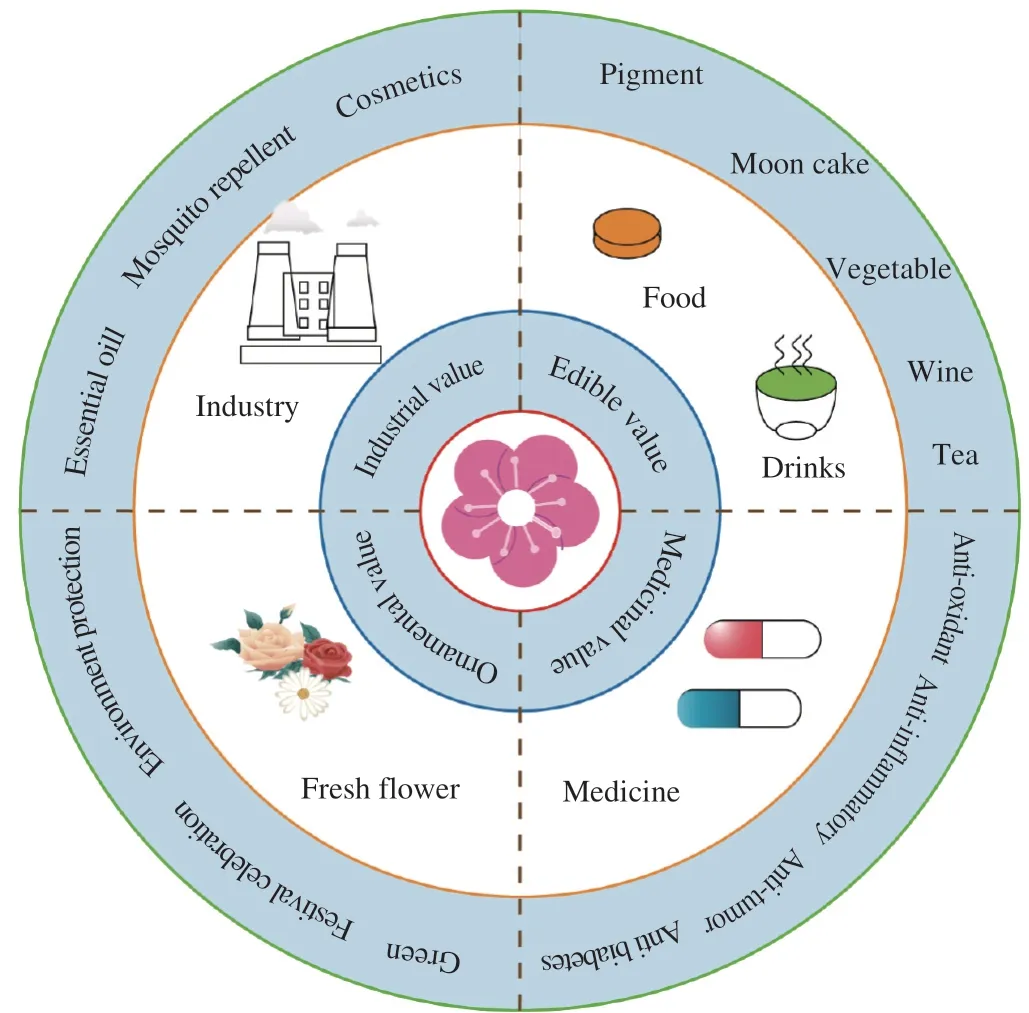
Fig. 18 Application value of flower plants.
Flower plants have important ornamental value, which widely used in daily life. In addition, flowers are often used to improve the urban environment, celebrate important festivals, decorate important places and express people’s emotions. Some flower plants with rich nutrients have good edible value, and are often used as raw materials for food (vegetables, flowers, moon cakes) and drinks (tea, wine) [6].Some flower plants also have important medicinal value for the treatment of various diseases due to their rich bioactive ingredients [10,11,100,130,131]. Flower plants are rich in essential oils, which are often used in the preparation of cosmetics (mask,essence), toiletries and mosquito repellent, etc. In addition,the emergence of a series of new research technologies and methods [132,133] has accelerated the utilization of the medicinal value of flower plants, such as insecticides and other drugs [16].
5. Concluding remarks and prospects
Flower plants are widely distributed in the world and have many important values besides ornamental value and considered as an important source of food, beverage and medicine. In recent years,the chemical composition and pharmacological research of flower plants are focused. The bioactive components of flower plants such as flavonoids, terpenoids, alkaloids, phenylpropanoids and organic acids have been proved to have many pharmacological effects with the characteristics of multiple pathways and targets, such as antioxidation, anti-inflammatory, anti-tumor, hypoglycemic, antibacterial, anti-virus, hepatoprotection and neuroprotection. Among them, flavonoids and terpenoids are the main active components in flower plants, which have significant effects in anti-oxidant, antiinflammatory, anti-tumor and hypoglycemic aspects. Furthermore,flower plants can be used as a strategy to delay oxidative stress,inflammation, cancer and other related diseases. Flower plants are also widely used in perfume, cosmetics, mosquito repellent,insecticide and other industrial fields. In addition, it is hoped that researchers can use new science and technology to quickly explore the active ingredients and action mechanism of flower plants, such as network pharmacology technology and “spectrum effect relationshipcomponent knock out-mass spectrometry identification-efficacy”technology. And the extracts and bioactive molecules of flower plants can be further studied in animal and clinical trials to develop drugs for the treatment of related diseases. Furthermore, the non-active components such as natural pigments of flower plants were further developed and utilized.
Declaration of competing interest
The authors report that there is no conflict of interest.
Acknowledgments
This work was funded by National Key R&D Program of China(2022), Research on Precision Nutrition and Health Food, Department of Science and Technology of Henan Province (CXJD2021006),Key Project in Science and Technology Agency of Henan Province(212102310355).
Appendix A. Supplementary data
Supplementary data associated with this article can be found, in the online version, at https://doi.org/10.1016/j.fshw.2022.10.022.
杂志排行
食品科学与人类健康(英文)的其它文章
- Emerging natural hemp seed proteins and their functions for nutraceutical applications
- A narrative review on inhibitory effects of edible mushrooms against malaria and tuberculosis-the world’s deadliest diseases
- Modulatory effects of Lactiplantibacillus plantarum on chronic metabolic diseases
- The role of f lavonoids in mitigating food originated heterocyclic aromatic amines that concerns human wellness
- The hypoglycemic potential of phenolics from functional foods and their mechanisms
- Insights on the molecular mechanism of neuroprotection exerted by edible bird’s nest and its bioactive constituents
